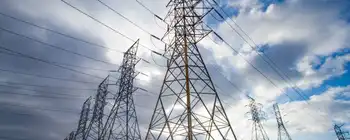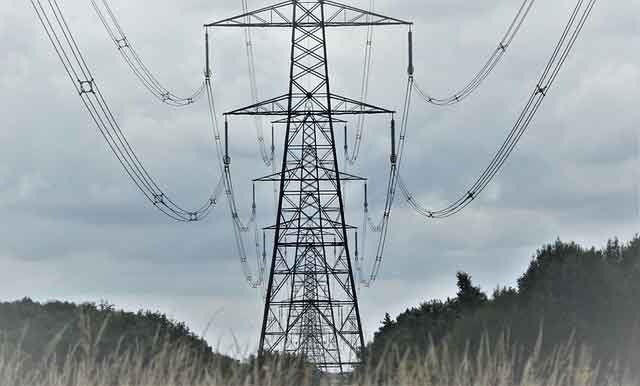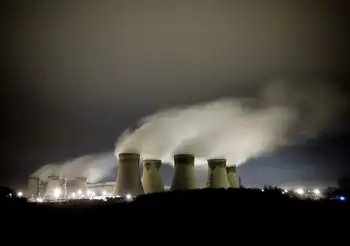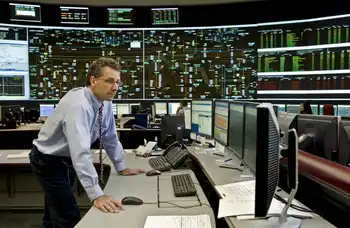Radiation found in Tokyo tap water
By Toronto Star
Electrical Testing & Commissioning of Power Systems
Our customized live online or in‑person group training can be delivered to your staff at your location.

- Live Online
- 12 hours Instructor-led
- Group Training Available
Radiation has seeped into vegetables, raw milk, the water supply and seawater since a magnitude-9 quake and killer tsunami crippled the Fukushima Daiichi power plant. Broccoli was added to a list of tainted vegetables, and U.S. officials announced a block on Japanese dairy and other produce from the region.
The crisis is emerging as the world's most expensive natural disaster on record, likely to cost up to $309 billion, according to a new government estimate. The death toll continued to rise, with more than 9,400 bodies counted and more than 14,700 people listed as missing.
Concerns about food safety spread to Tokyo after officials said tap water showed elevated levels: 210 becquerels per litre of iodine-131 — more than twice the recommended limit of 100 becquerels per litre for infants. The recommended limit for adults is 300 becquerels.
“It is really scary. It is like a vicious negative spiral from the nuclear disaster,” said Etsuko Nomura, a mother of two young children ages 2 and 5. “We have contaminated milk and vegetables, and now tap water in Tokyo, and I'm wondering what's next.”
Infants are particularly vulnerable to radioactive iodine, which can cause thyroid cancer, experts say. The limits refer to sustained consumption rates, and officials urged calm, saying parents should stop giving the tap water to babies, but that it was no worry if the infants already had consumed small amounts.
They said the levels posed no immediate health risk for older children or adults.
“Even if you drink this water for one year, it will not affect people's health,” Chief Cabinet Secretary Yukio Edano said.
Tokyo residents shouldn't worry, said Dr. Lim Sang-moo, director of nuclear medicine at the Korea Cancer Center Hospital in Seoul.
Parents might want to be more cautious if they have a choice. “Nobody wants to drink radioactive water,” he said. But “it's not a medical problem but a psychosocial problem: The stress that people get from the radioactivity is more dangerous than the radioactivity itself.”
Experts also say iodine-131 dissipates quickly in the air, with half of it disappearing every eight days.
Richard Wakeford, a public health radiologist at the University of Manchester in Britain, blamed the spike in radiation on a shift in winds from the nuclear plant toward Tokyo. He predicted lower levels in coming days once the wind shifts back to normal patterns.
“I imagine that bottled water is now quite popular in Tokyo,” he said.
Convenience stores around Tokyo began selling out of water soon after the news broke. At one downtown supermarket, clerk Toru Kikutaka said water purchases were limited to two, two-litre bottles per person, but the store still sold out almost immediately.
“I've never seen anything like this,” he said.
The latest reported food data showed sharp increases in radioactivity levels in a range of vegetables. In an area about 40 kilometres northwest of the plant, levels for one locally grown leafy green called kukitachina measured 82 times the government's limit for radioactive cesium and 11 times the limit for iodine.
The unsettling new development affecting Japan's largest city, home to some 13 million in the city centre, came as nuclear officials struggled to stabilize the hobbled reactor 220 kilometres to the north.
The quake and tsunami that struck off the east coast March 11 knocked out the plant's crucial cooling systems.
Explosions and fires followed in four of the plant's six reactors, leaking radioactive steam into the air. Progress in cooling down the facility has been intermittent, disrupted by rises in radiation, elevated pressure in reactors and overheated storage pools.
The plant operator had restored circuitry to bring power to all six units and turned on lights at Unit 3 for the first time since the disaster — a significant step toward restarting the cooling system.
It had hoped to restore power to cooling pumps at the unit within days, but experts warned the work included the risk of sparking fires as electricity is restored through equipment potentially damaged in the tsunami.
Tokyo Electric Power Co. manager Teruaki Kobayashi said the pump for Unit 3 had been tested and it was working. But officials weren't sure when they would be able to turn the power on to the pump.
In a new setback, black smoke billowed from Unit 3, prompting another evacuation of workers from the plant during the afternoon, Tokyo Electric officials said. They added that there had been no corresponding spike in radiation at the plant.
“We don't know the reason” for the smoke, said Hidehiko Nishiyama of the Nuclear and Industrial Safety Agency.
Nuclear agency official Kenji Kawasaki said workers would not be allowed to return to the plant until March 24, as it was too difficult to tell at night whether all the smoke had cleared.
As a precaution, officials have evacuated residents living within 20 kilometres of the plant and advised those up to 30 kilometres away to stay indoors to minimize exposure.
And for the first time, Edano suggested that those downwind of the plant, even if just outside the zone, should stay indoors with the windows shut tight.
Survivors, meanwhile, buried the dead from the disaster in makeshift coffins, resorting to wrapping some bodies in blue tarps.
In Higashimatsushima, about 320 kilometres northeast of Tokyo, soldiers lowered bare plywood coffins into the ground, saluting each casket, as families watched from a distance. Two young girls wept inconsolably, their father hugging them tight.
“I hope their spirits will rest in peace here at this temporary place,” said mourner Katsuko Oguni, 42.
Hundreds of thousands remained homeless, squeezed into temporary shelters without heat, warm food or medicine and no idea what to call home after the colossal wave swallowed up cities and towns along the coast.











